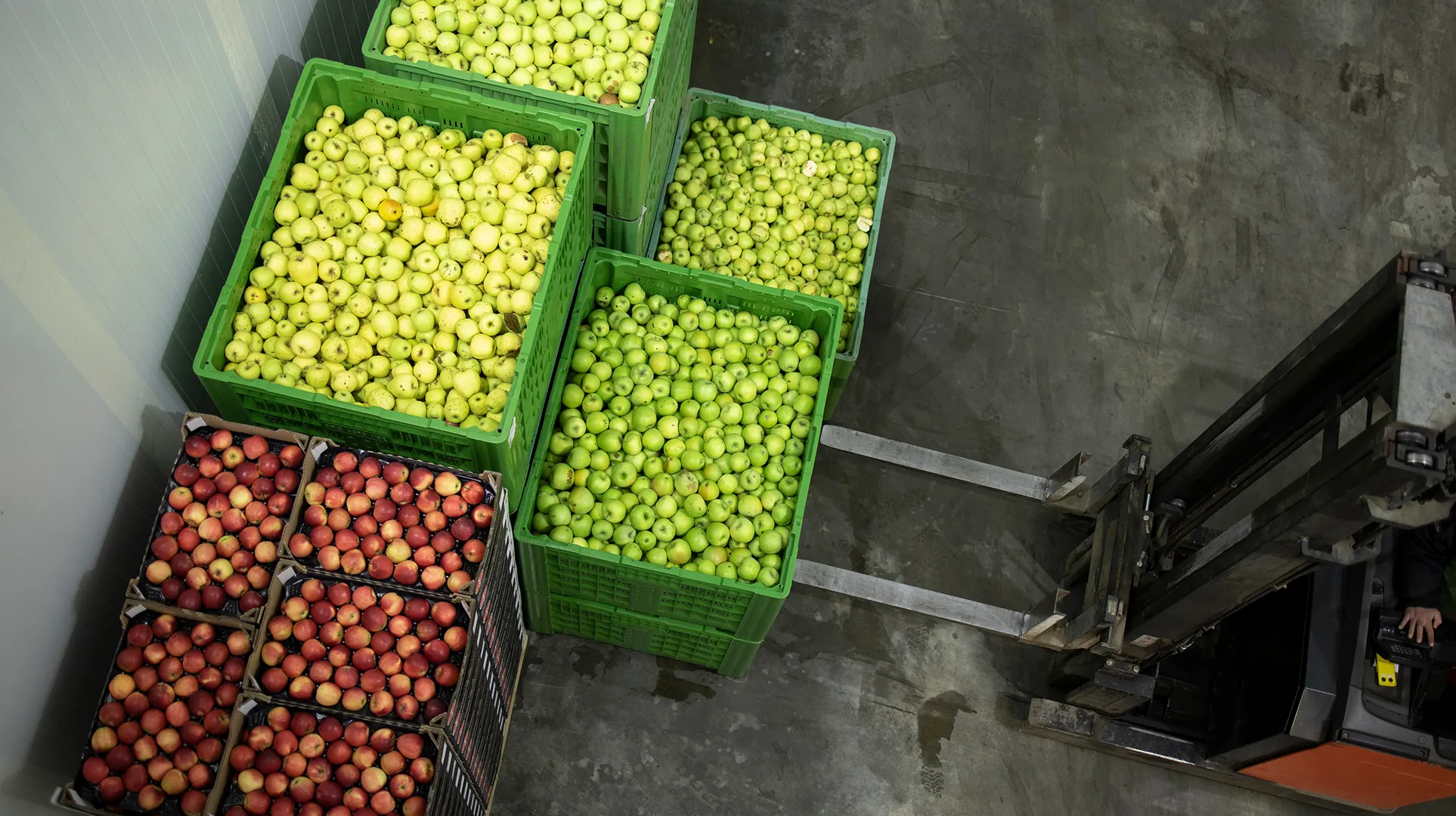Einführung: Die Rolle natürlicher Absicherungen im Lebensmittelsektor
Der Lebensmittelsektor steht beim Umgang mit Währungsrisiken (FX) vor mehreren einzigartigen Herausforderungen: verderbliche Lagerbestände, hohe Saisonalität, schwankende globale Rohstoffpreise und ein Netz internationaler Lieferanten und Käufer. Für Entscheidungsträger im Finanzbereich — darunter CFOs, Finanzmanager und Leiter des Finanzministeriums — bietet Natural Hedging einen praktischen Ansatz zur Reduzierung des operativen Risikos. In diesem Artikel wird untersucht, wie Natural Hedging speziell in der Lebensmittelindustrie funktioniert, seine Vor- und Nachteile skizziert und umsetzbare Schritte zur Umsetzung aufgezeigt.

Was ist Natural Hedging?
Natürliche Absicherung bezieht sich auf die Ausrichtung der Zu- und Abflüsse von Fremdwährungen, um sich gegenseitig auszugleichen, ohne dass Finanzderivate eingesetzt werden. So gleicht beispielsweise ein britisches Molkereiunternehmen, das Milchpulver aus Europa kauft (in EUR zahlt) und Käse nach Deutschland exportiert (in EUR fakturiert), sein Euro-Risiko auf natürliche Weise aus. Indem Einnahmen und Kosten in derselben Währung aufeinander abgestimmt werden, wird das Wechselkursrisiko reduziert, ohne dass vertragliche Instrumente wie Termingeschäfte oder Optionen erforderlich sind.
Warum Lebensmittelunternehmen Natural Hedging verwenden
- Vereinfacht das Devisenmanagement: Reduziert das Volumen der Währungsumrechnungen.
- Minimiert die Transaktionskosten: Weniger Konversionen bedeuten weniger Bankgebühren und weniger Risiko von versteckten Spreads.
- Verbessert den Randschutz: Reduziert die Auswirkungen von Währungsschwankungen auf den Bruttogewinn, was in einem preissensiblen Sektor mit niedrigen Margen von entscheidender Bedeutung ist.
- Entspricht der Saisonalität: Viele Lebensmittelverträge sind an Ernte- oder Versandzyklen gebunden, sodass natürliche Ausgleichszahlungen innerhalb von Zeiträumen möglich sind.
So funktioniert Natural Hedging in der Praxis
Natürliche Absicherungsstrategien variieren je nach Struktur und Devisenprofil des Unternehmens. Hier sind einige Beispiele aus dem Lebensmittelsektor:
1. Beschaffung und Verkauf in mehreren Währungen
Ein britischer Importeur von Tiefkühlkost kauft Gemüse aus Polen (PLN) und verkauft es an Supermärkte in Finnland (er erhält dafür EUR). Durch Verhandlungen über den Kauf in EUR (wo möglich) und den Verkauf in EUR gleicht das Unternehmen Zuflüsse und Abflüsse an und sorgt dafür, dass sein Devisenrisiko eng aufeinander abgestimmt ist.
2. Diversifizierung der Kunden- und Lieferantenbasis nach Währungen
Angenommen, ein Getränkehersteller bezieht Orangen sowohl aus Spanien als auch aus Südafrika (EUR und ZAR). Die Umstrukturierung von Lieferverträgen, sodass Rohstoffkäufe nach den Währungen gewichtet werden, die ihren Exportmärkten entsprechen (z. B. Verkauf in ZAR an Partner in Südafrika), führt zu natürlichen Kompensationen und glättet die durch plötzliche Währungsschwankungen verursachte Gewinn- und Verlustrechnung.
3. Interne Strukturen für die Neufakturierung
Größere, multinationale Lebensmittelkonzerne könnten regionale Finanzzentren nutzen, um Währungsflüsse zu internalisieren und Transaktionen innerhalb des Unternehmens in passenden Währungen neu zu fakturieren, um das Nettorisiko zu verringern. Dieser Ansatz macht die Berichterstattung und Bilanzierung von Währungsrisiken transparenter, erfordert jedoch eine sorgfältige Abstimmung zwischen Tochterunternehmen und Finanzabteilungen.

Vorteile von Natural Hedging für die Lebensmittelindustrie
- Keine Derivatkosten: Es ist nicht erforderlich, finanzielle Absicherungsprodukte (wie Forwards oder Optionen) zu erwerben, sodass die Kosten, abgesehen von administrativen Anpassungen, minimal sind.
- Geringere betriebliche Komplexität: Devisenabrechnungen werden reduziert, wodurch Unterbrechungen des Arbeitsablaufs minimiert werden.
- Unterstützt die Vorhersagbarkeit des Cashflows: Nützlich bei der Verwaltung verderblicher Lagerbestände, die engen Zahlungszyklen unterliegen.
- Regulatorische Einfachheit: Vermeidet die mit Derivaten verbundene Komplexität der Berichterstattung und Rechnungslegung.
Grenzen und Risiken natürlicher Absicherungen
Natürliche Absicherung ist kein vollständiger Schutzschild. CFOs im Lebensmittelsektor sollten sich dieser Einschränkungen bewusst sein:
- Unvollkommene Offsets: Selten stimmen Zuflüsse und Abflüsse in Höhe, Zeitpunkt oder Währung perfekt überein — in der Regel besteht ein Nettorisiko.
- Marktdynamik: Kunden- und Lieferantenpräferenzen können die Möglichkeit einschränken, in einer anderen Währung zu fakturieren.
- Betriebliche Einschränkungen: Eingeschränkte Flexibilität bei der Diversifizierung der Lieferkette, insbesondere beim Umgang mit verderblichen Waren und dringenden Sendungen.
- Strategische Kompromisse: Manchmal überwiegen kommerzielle Bedingungen (z. B. ein besserer Preis für die Zahlung in Landeswährung) die Vorteile der Devisenanpassung.
Aus diesen Gründen kombinieren Lebensmittelunternehmen häufig natürliche Absicherungen mit finanziellen Absicherungen (wie Termingeschäfte, bei denen es sich um verbindliche Derivate handelt und bei denen möglicherweise Sicherheiten erforderlich sind, falls sich die Zinssätze gegen Sie entwickeln), um das Restrisiko abzudecken.
Wichtige Überlegungen für Finanzteams im Lebensmittelsektor
- Abbildung von Währungsflüssen: Prüfen Sie alle Zu- und Abflüsse von Fremdwährungen in Vertrieb, Beschaffung und Logistik.
- Neuverhandlung von Verträgen: Standardisieren Sie nach Möglichkeit mit wichtigen Gegenparteien auf eine gemeinsame Währung, um das Kompensationspotenzial zu erhöhen.
- Überwachung der Saisonalität: Passen Sie die Routinen für das Devisenmanagement an saisonale Spitzenzeiten an, z. B. an Erntezeiten oder Feiertagen.
- Regelmäßige Neubewertung: Überprüfen Sie regelmäßig die Nettorisiken, da sich der Produktmix, die Märkte und die Lieferketten weiterentwickeln.
- Zusammenarbeit mit dem Finanzministerium: Die Finanz- und Betriebsteams sollten sich abstimmen, um sicherzustellen, dass die natürliche Absicherung in die umfassendere Risikomanagementpolitik integriert wird.
Praktische Schritte zur Verbesserung der natürlichen Absicherung in Ihrem Lebensmittelgeschäft
- Identifizieren Sie die Währungen mit dem größten Netto-Expositionsrisiko.
- Sprechen Sie mit Käufern und Lieferanten: Besprechen Sie bei der nächsten Vertragsänderung die Flexibilität bei der Rechnungsstellung in Währungen.
- Passen Sie nach Möglichkeit die Währungsbedingungen in Verbindlichkeiten und Forderungen an.
- Passen Sie physische und vertragliche Lieferketten an die Verkaufsströme an — bedienen Sie z. B. Exportmärkte von Anbietern mit passenden Währungen.
- Richten Sie aussagekräftige Berichte ein (monatliche oder vierteljährliche Überprüfungen), um Offsets und Risikopositionen nachzuvollziehen.
Technologische Instrumente zur Unterstützung natürlicher Absicherungen
Unternehmen der Lebensmittelbranche können von moderner Treasury-Software, ERP-Modulen oder branchenspezifischen FX-Plattformen profitieren, um:
- Automatisieren Sie Cashflow-Prognosen nach Währung und Region.
- Stellen Sie Echtzeit-Dashboards mit abgeglichenen Risiken und Nettorisiken bereit.
- Generieren Sie Warnmeldungen für Ungleichgewichte, die eine Marktabsicherung mit Derivaten erfordern könnten.
Wie Millbank FX helfen kann
Bei Millbank FX unterstützen wir britische Lebensmittelunternehmen bei der Optimierung ihres FX-Risikorahmens — angefangen bei der Identifizierung natürlicher Absicherungsmöglichkeiten und deren Kalibrierung bei Bedarf mit geeigneten Marktinstrumenten. Unser Team arbeitet mit Kunden zusammen, um die Kosten für Währungsumrechnungen zu senken, globale Zahlungen zu vereinfachen und saisonbedingte Risiken effektiv zu managen.
Zusammenfassung
Natural Hedging bietet führenden Finanzdienstleistern im Lebensmittelsektor einen kosteneffizienten, operativ ausgerichteten Ansatz für das Devisenrisikomanagement. Es ist zwar nicht narrensicher und sollte durch eine aktive Überwachung und gelegentlich durch Marktabsicherung mit Forwards oder Optionen unterstützt werden, aber es kann Arbeitsabläufe vereinfachen und Gewinnmargen in einem volatilen globalen Markt sichern. Für maßgeschneiderte Beratung und zur Umsetzung bewährter Devisenstrategien setzen Sie sich mit Ihrem Millbank-Händler in Verbindung oder erkunden Sie unsere FX-Insights-Hub.




